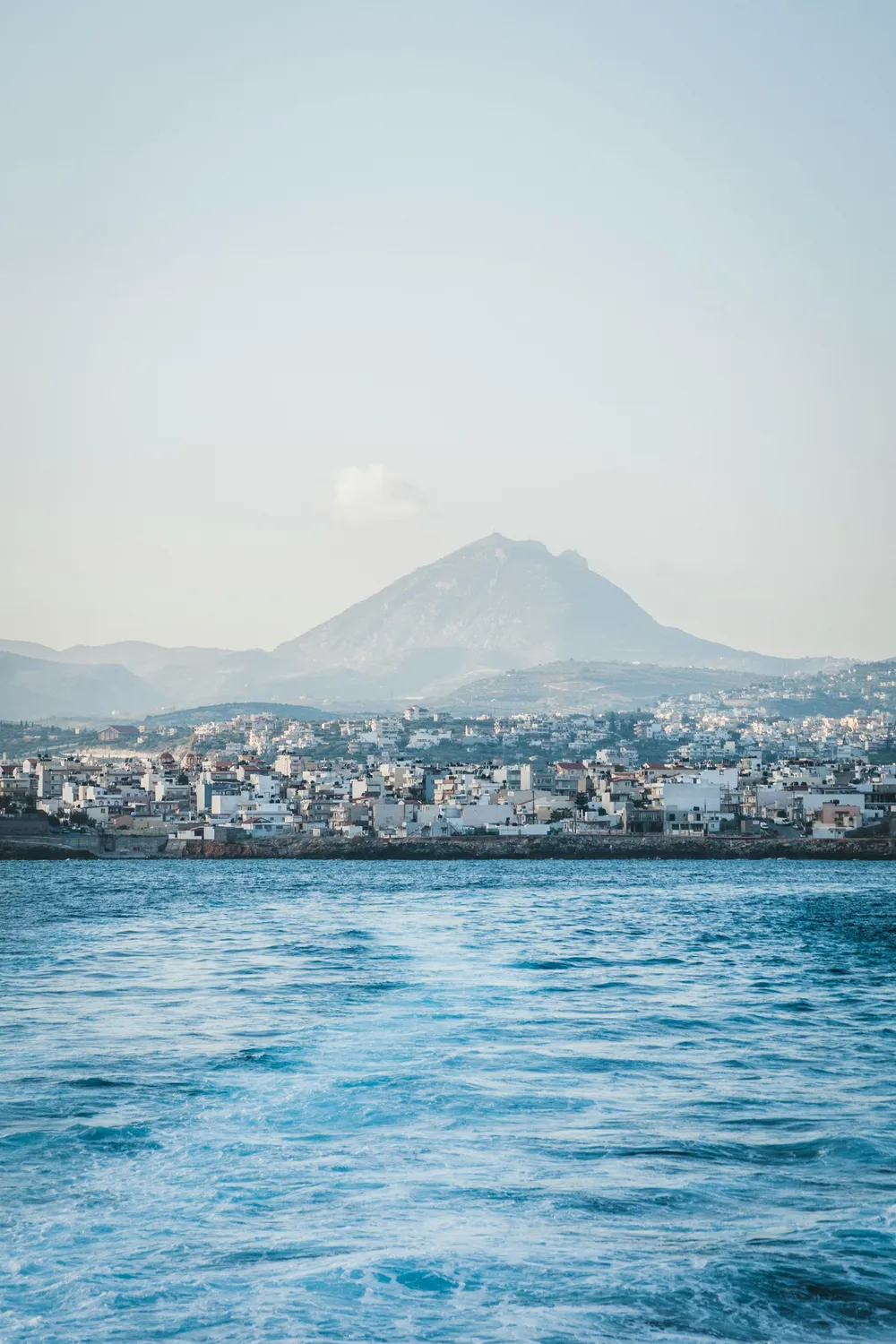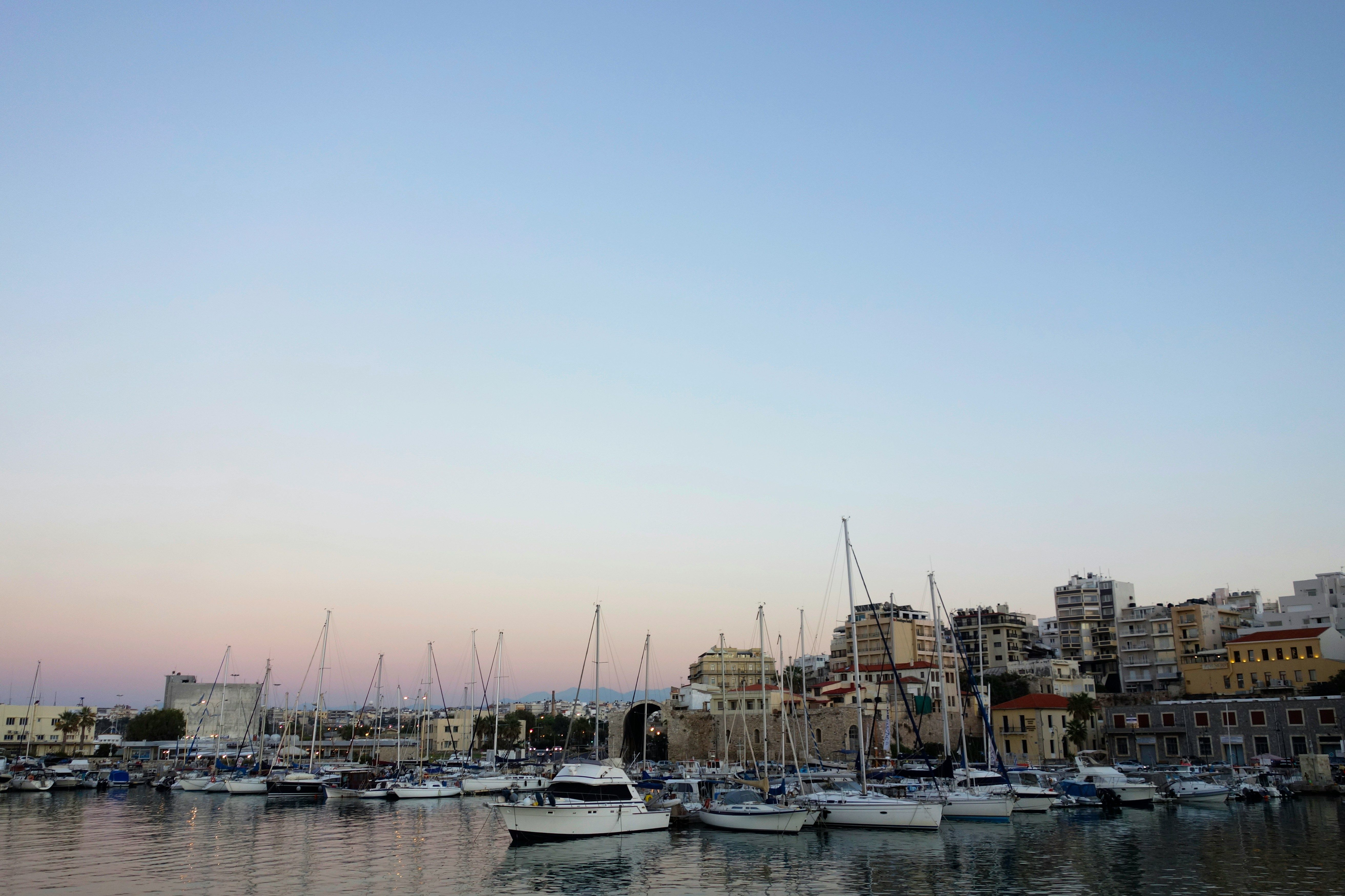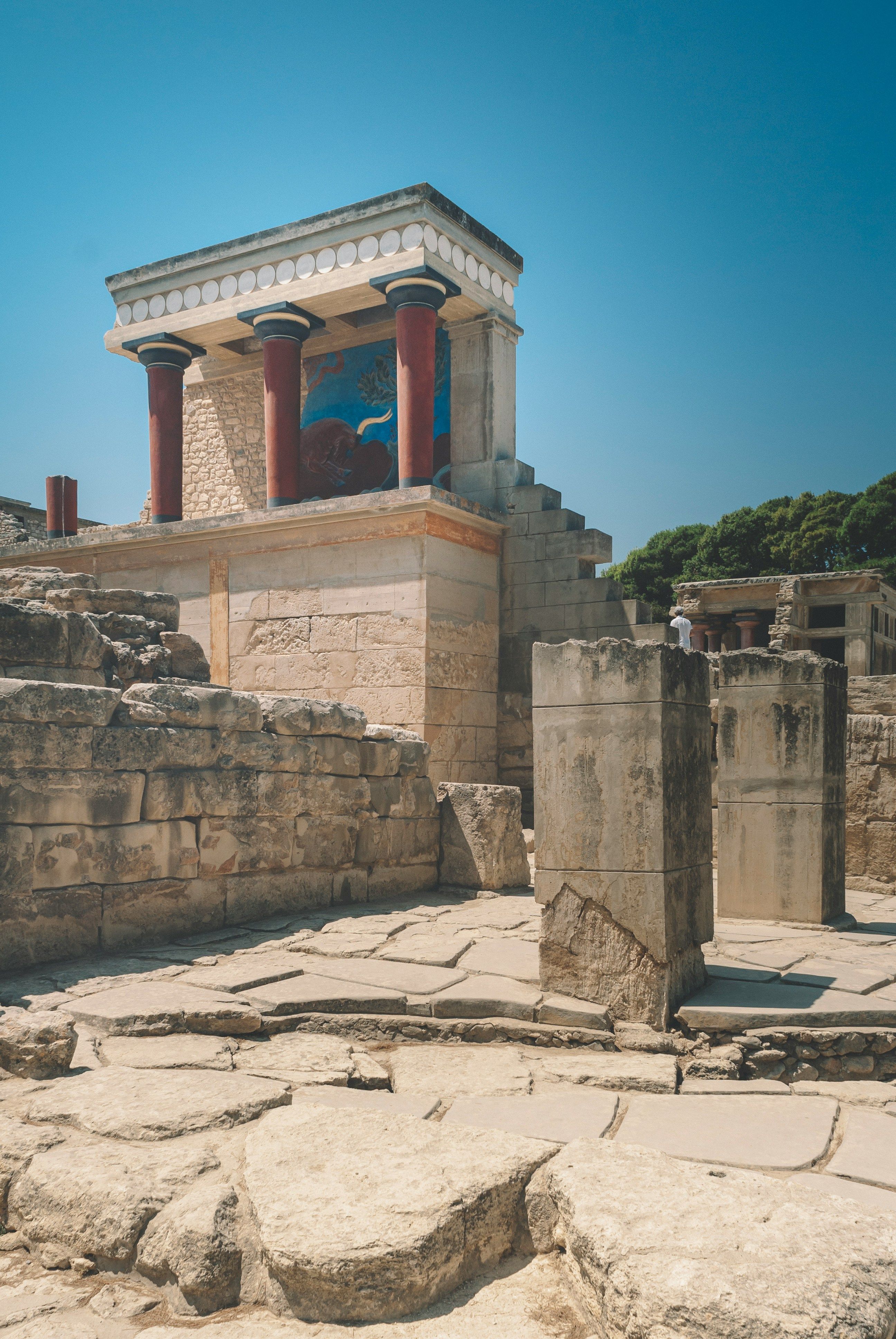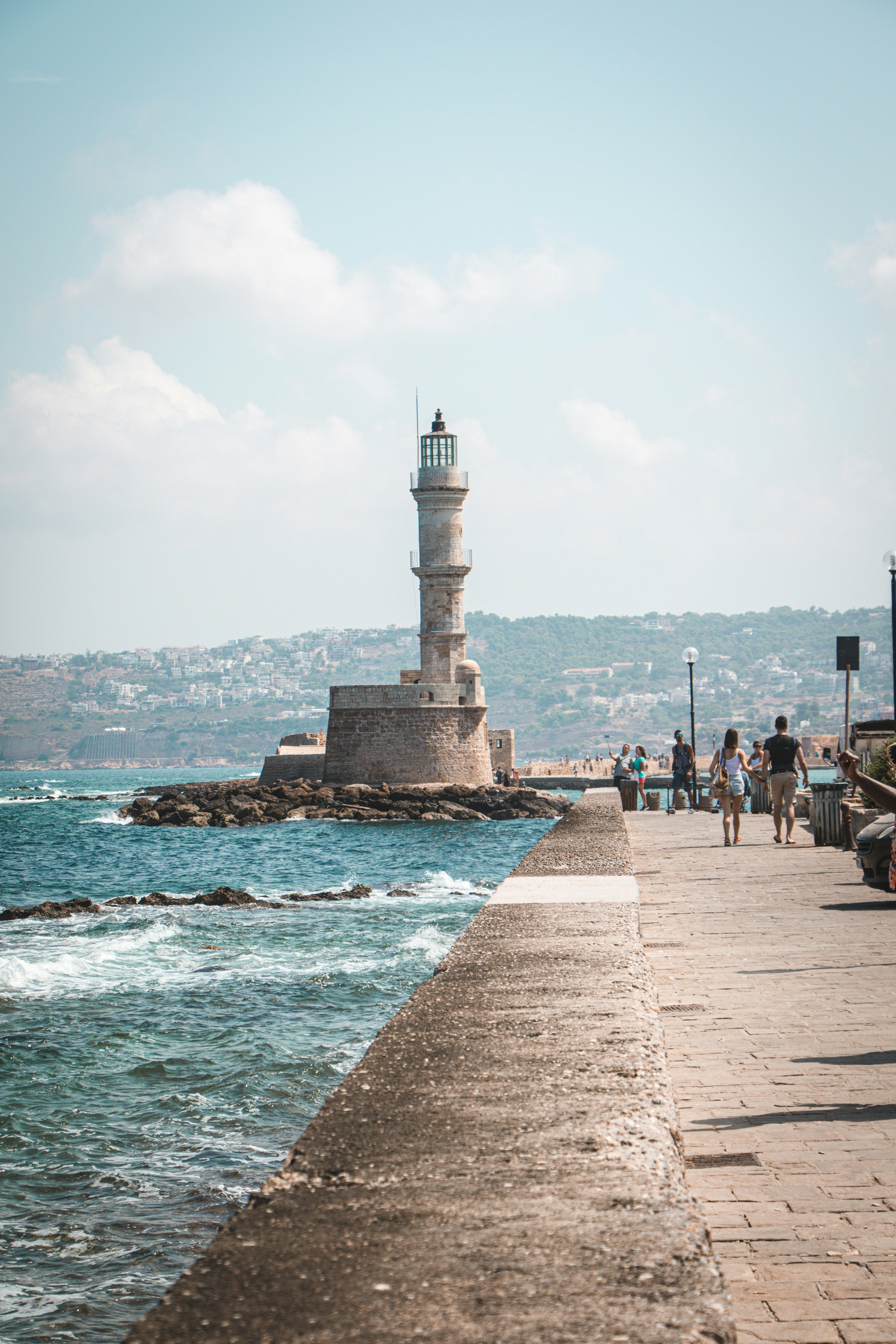Travelling from Piraeus to Heraklion: Complete Ferry & Travel Guide
Travel Guides
Travel Guides


Exploring the journey from Piraeus to Heraklion offers travellers a classic Greek island experience. This popular route connects mainland Greece with Crete, the country's largest island, and is serviced by regular ferry connections throughout the year. While flights provide a quicker alternative, the ferry journey presents a more scenic and relaxed travel experience. Covering approximately 312.1 km (193.9 miles), this sea route allows you to enjoy the magnificent Aegean waters while transporting you to one of Greece's most beloved destinations. This guide provides everything you need to know about travelling between these two important Greek ports, with a focus on the ferry services that connect them.
When planning your journey from Piraeus to Heraklion, you have two main transportation options: flying or taking a ferry. Each option offers different advantages depending on your travel preferences and schedule constraints.
Flying between Athens (the closest airport to Piraeus) and Heraklion is the quickest option, with flights taking approximately one hour. However, when considering the time needed to travel to and from airports, check-in procedures, and potential delays, the actual door-to-door journey time increases significantly.
Ferry travel, by contrast, offers a more relaxed pace. The sea journey covers 168.5 nautical miles and takes an average of 9 hours and 33 minutes. With approximately 2 daily sailings and 19 weekly departures, ferries provide flexible scheduling options for travellers. The convenience of departing directly from Piraeus port and arriving at Heraklion's centrally located harbour is a significant advantage.
While flights might save time, ferries offer unique benefits: the opportunity to bring your vehicle, enjoy spacious accommodations, take in spectacular sea views, and experience a more gradual transition between destinations. Many travellers find the overnight ferries particularly convenient, as they allow you to save on accommodation costs while making the most of your time.
You can take a ferry from Piraeus to Heraklion. Ferries sail in around 9 hours and 33 minutes with about 2 sailings a day. The fastest ferry sails in around 8 hours and 45 minutes and is provided by Blue Star Ferries. Ferry prices can range depending on the operator, whether it is a conventional or fast ferry, and time of year. The average price for the fastest service is around £108 for a foot passenger. Departures start as early as 07:00, with the last departure from Piraeus to Heraklion at 21:00.
Blue Star Ferries is the primary operator offering the fastest service on this route. Their modern vessels are equipped with a range of amenities to ensure a comfortable journey. Onboard, you can expect to find restaurants, cafés, shops, comfortable seating areas, and various cabin options for overnight sailings. Most ferries also feature outdoor deck spaces where you can enjoy the fresh sea air and spectacular views of the Aegean Sea.
The ferry schedule remains relatively consistent throughout the year with 87 sailings per month, making this a reliable year-round connection between mainland Greece and Crete. However, additional services may be added during the summer high season to accommodate increased tourist demand.
Vehicle transportation is available on this route, allowing you to bring your car, motorcycle, or campervan to explore Crete at your own pace. This is particularly valuable given Crete's large size and the many attractions spread across the island that are more easily accessible with your own transportation.

Piraeus is the main port of Athens and one of the busiest passenger ports in Europe. Located approximately 10 km southwest of Athens city centre, it's easily accessible via public transportation. The most convenient way to reach the port is by metro (Line 1, green line), which connects directly to central Athens with a journey time of approximately 20 minutes from Monastiraki or Omonia squares.
The port itself is divided into several gates serving different destinations. Ferries to Heraklion typically depart from Gates E1, E2, or E3. It's advisable to confirm your specific gate in advance, as the port is extensive and walking between gates can take 15-20 minutes. Port information screens and staff can direct you to the correct location.
Facilities at Piraeus port include luggage storage, waiting areas, cafés, restaurants, ATMs, and shops. If you're driving to the port, there are several parking options available nearby, though they can be expensive for long-term stays. Taxis are readily available at designated stands throughout the port area.
Heraklion port is conveniently located close to the city centre, making it easy to access your accommodation upon arrival. The port has a straightforward layout with clear signage directing foot passengers and vehicles.
Upon disembarking, you'll find taxis waiting outside the terminal building. The city centre is approximately a 10-15 minute walk from the port, making it accessible for those with light luggage. For those with heavier bags or those heading to accommodations further away, taxis are the most convenient option.
Public buses also operate from near the port, connecting to various parts of Heraklion and other destinations around Crete. The main bus station (KTEL) for long-distance travel is about 1 km from the port.
Port facilities include cafés, tourist information, currency exchange, and car rental offices. Several hotels and restaurants are within walking distance, making it convenient if you arrive on an early morning ferry and need refreshments before continuing your journey.
While technically possible, a day trip from Piraeus to Heraklion is challenging due to the ferry journey duration. With an average sailing time of 9 hours and 33 minutes each way, and considering the earliest departure from Piraeus is at 07:00, you would arrive in Heraklion in the late afternoon, leaving very little time to explore before needing to catch a return ferry.
If you're determined to make a day trip, your best option would be to take the fastest Blue Star Ferries service (8 hours 45 minutes) departing at 07:00, which would get you to Heraklion around 15:45. This would give you a few hours to see some key attractions near the port, such as the Heraklion Archaeological Museum or the Koules Fortress, before catching an evening ferry back to Piraeus.
However, we strongly recommend spending at least one night in Heraklion to properly experience the city and perhaps explore some of the nearby attractions like the Palace of Knossos. A more realistic approach would be to plan a 2-3 day trip, taking an overnight ferry in one direction to maximise your time in Crete.
If you're limited on time but still want to experience a Greek island, consider alternatives closer to Athens such as Aegina, Hydra, or Poros, which can be reached in 40 minutes to 2 hours from Piraeus and are more suitable for day trips.
Heraklion, the capital of Crete, offers a wealth of attractions that blend historical significance with modern Greek island charm:
Located just 5 km south of Heraklion, this is the most important Minoan archaeological site in Crete. The ancient palace complex dates back to 2000 BCE and is associated with the myth of the Minotaur. Open daily from 8:00 to 20:00 in summer (shorter hours in winter), it's an essential visit for history enthusiasts.
Housing the world's most complete collection of Minoan artefacts, this museum perfectly complements a visit to Knossos. The exhibits include the famous Bull-Leaping Fresco and Snake Goddess figurines. Located in the city centre, it's open daily except Tuesdays from 8:00 to 20:00 in summer.
This impressive Venetian fortress guards Heraklion's harbour and offers panoramic views of the sea. Built in the 16th century, it's a reminder of the city's strategic importance and varied cultural influences. Open daily from 8:00 to 15:00, it's just a short walk from the ferry terminal.
Covering the Byzantine period through modern times, this museum includes works by El Greco (born in Crete) and exhibits on Cretan history and culture. Open Monday to Saturday from 9:00 to 17:00, it provides context for understanding the island's rich heritage.
Explore the charming streets of the old town with its Venetian fountains, historic churches, and lively markets. The pedestrianised 25th August Street and the bustling 1866 Market Street are perfect for shopping, dining, and experiencing local life.

Heraklion's city centre is compact and walkable, with most attractions concentrated in a few key areas:
The Old Town area surrounding Lions Square (Plateia Eleftheriou Venizelou) forms the heart of tourist Heraklion. Here you'll find the impressive Morosini Fountain, numerous cafés, restaurants, and shops selling local products.
The Waterfront district near the Venetian Harbour offers seafood restaurants, bars with sea views, and a more relaxed atmosphere. It's particularly pleasant for an evening stroll along the promenade.
For a more authentic experience, head to Theotokopoulou Street and the surrounding area, where locals shop and dine away from the main tourist paths. This district offers lower prices and a glimpse into everyday Cretan life.
The area around El Greco Park is known for its nightlife, with numerous bars and clubs staying open late, especially during the summer months.
Heraklion enjoys a typical Mediterranean climate with mild, wet winters and hot, dry summers. The most pleasant times to visit are late spring (May-June) and early autumn (September-October) when temperatures are warm but not excessive, ranging from 20-28°C (68-82°F).
July and August are the hottest months, with temperatures regularly exceeding 30°C (86°F) and minimal rainfall. These months also coincide with peak tourist season, so expect more crowds and higher prices.
Winter (November to March) brings milder temperatures ranging from 10-18°C (50-64°F) and increased rainfall, particularly in December and January. While some attractions may have reduced hours during this period, the city remains active year-round.
Weather conditions can occasionally affect ferry operations, particularly during the winter months when strong winds might cause delays or cancellations. Summer generally offers the most reliable sailing conditions, though the occasional meltemi winds can cause disruptions even in warm months. If you're travelling during winter, it's advisable to have some flexibility in your schedule to accommodate potential weather-related adjustments.
Heraklion offers good value compared to many European destinations, though prices are typically higher than in mainland Greece:
For budget travellers, expect to spend around £40-60 per day, including a bed in a hostel dormitory (£15-25), meals at inexpensive restaurants or street food (£15-20), and public transportation or limited attractions (£10-15).
Mid-range travellers should budget approximately £80-120 daily, covering a decent hotel room (£40-70), meals at mid-range restaurants (£25-35), and entrance fees to several attractions plus some transportation (£15-25).
Luxury travellers can expect to spend £150+ per day with high-end hotels starting at £100, fine dining experiences (£40-60 per person), and premium activities or private tours.
Typical costs include: a simple gyros sandwich (£3-4), coffee at a café (£2-3), dinner at a traditional taverna (£15-25 per person including wine), local bus ticket (£1.50-2), entrance to Knossos (£15), and a taxi from the port to the city centre (£8-10).
To save money, consider visiting in shoulder season (May-June or September-October), eating where locals eat rather than at tourist-focused establishments, and purchasing a multi-site ticket if you plan to visit several archaeological sites.
The ideal time to visit Heraklion depends on your preferences for weather, crowds, and activities:
Peak season (July-August) brings hot weather perfect for beach activities, with temperatures consistently around 30°C (86°F). This is when Heraklion is most lively, with all attractions, restaurants, and services operating at full capacity. However, this period also brings the largest crowds and highest prices, with advance booking essential for accommodations and popular restaurants.
Shoulder seasons (May-June and September-October) offer an excellent balance of pleasant weather (20-28°C/68-82°F), reduced crowds, and slightly lower prices. Most attractions and services are fully operational, but you'll enjoy a more relaxed atmosphere and better availability.
The off-peak period (November-April) sees fewer tourists and the lowest prices, though some seasonal businesses may be closed or operating with reduced hours. Winter temperatures remain mild compared to northern Europe (10-18°C/50-64°F), making it still comfortable for exploring the city and archaeological sites, though less ideal for beach activities.
Cultural events worth considering include the Heraklion Summer Festival (July-September) featuring concerts and performances, Easter celebrations (dates vary) which are particularly atmospheric in Greece, and the Wine Festival in August celebrating local Cretan wines and cuisine.
For the best overall experience combining good weather, reasonable prices, and manageable crowds, we recommend visiting in late May, June, or September.

Finding the right place to stay in Heraklion is easy with options for every budget and travel style. The city offers a range of accommodations to suit your needs after arriving by ferry from Piraeus.
For budget-conscious travellers, the area around the old town and harbour provides affordable guesthouses and hostels starting from £25-40 per night. Solo travellers will appreciate the social atmosphere of hostels like Intra Muros and Heraklion Youth Hostel.
Couples might prefer the charm of boutique hotels in the historic centre, with prices ranging from £60-120 per night. Many offer rooftop terraces with views of the Venetian harbour.
Families will find excellent value in apartment rentals and family-friendly hotels slightly outside the city centre, typically ranging from £80-150 per night depending on size and amenities.
For those travelling by campervan, several campsites are located along the coast east and west of Heraklion, offering basic facilities from £15-25 per night. We recommend booking accommodation in advance during the peak summer season when the ferry route from Piraeus is busiest.
Navigating Heraklion after your ferry journey from Piraeus is straightforward with several convenient options available.
The city has an efficient bus network that connects the port with the city centre, airport, and major attractions. Single tickets cost approximately £1.50, and day passes are available for around £4. Buses run frequently during daytime hours with reduced service in the evenings.
Taxis are readily available at the port and throughout the city. A typical ride from the port to the city centre costs around £8-10. You can also use local ride-sharing apps for similar convenience.
Renting a car gives you the freedom to explore Crete at your own pace. Several rental agencies operate at both the port and the airport, with prices starting from about £30 per day. Remember that parking in the city centre can be challenging during busy periods.
Heraklion is also quite walkable, with many attractions concentrated in and around the old town. The flat terrain makes cycling another viable option, with bike rentals available from £10-15 per day.
The journey from Piraeus to Heraklion offers travellers an authentic maritime experience and a wonderful introduction to the magic of Crete. With up to 19 weekly sailings and daily departures, this popular ferry route provides flexibility for your travel plans.
Blue Star Ferries offers the quickest crossing at 8 hours and 45 minutes, with average ticket prices around £108. Whether you choose an early morning departure at 07:00 or prefer to sail through the night on the 21:00 service, you'll arrive refreshed and ready to explore everything this historic Cretan city has to offer.
The 312 km journey across the Aegean Sea is more than just transportation—it's the beginning of your Greek island adventure. From the moment you board in Piraeus to your arrival in vibrant Heraklion, the ferry experience adds an unforgettable dimension to your Greek travels.
Ready to set sail? Book your Piraeus to Heraklion ferry tickets today and prepare for an authentic Greek island experience that begins the moment you step aboard.